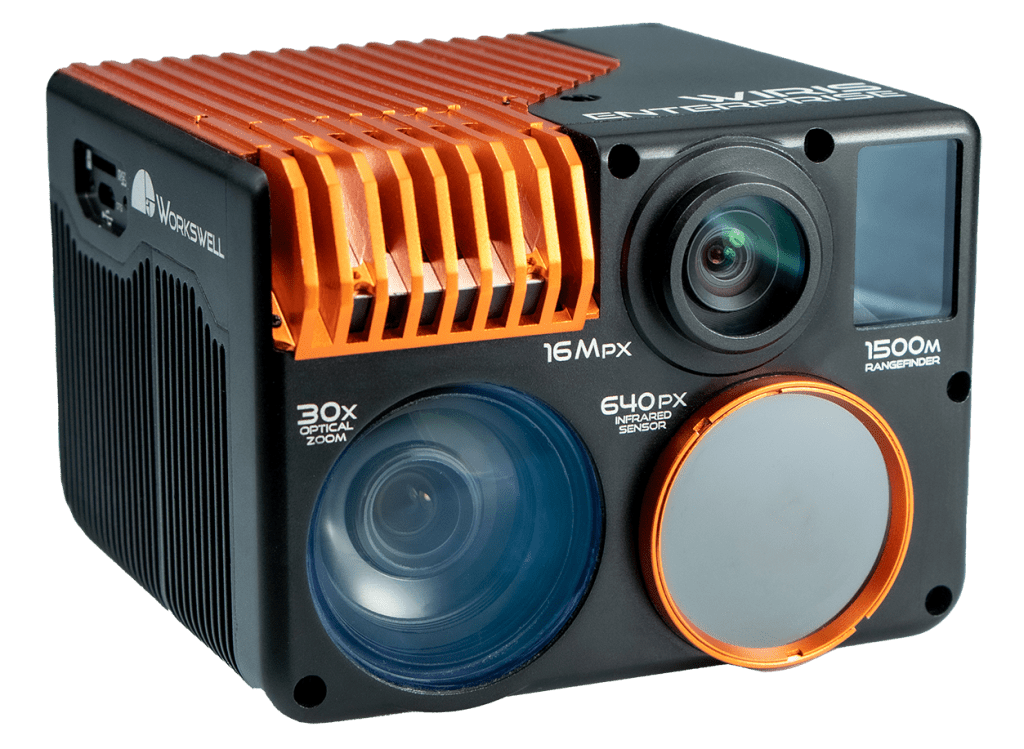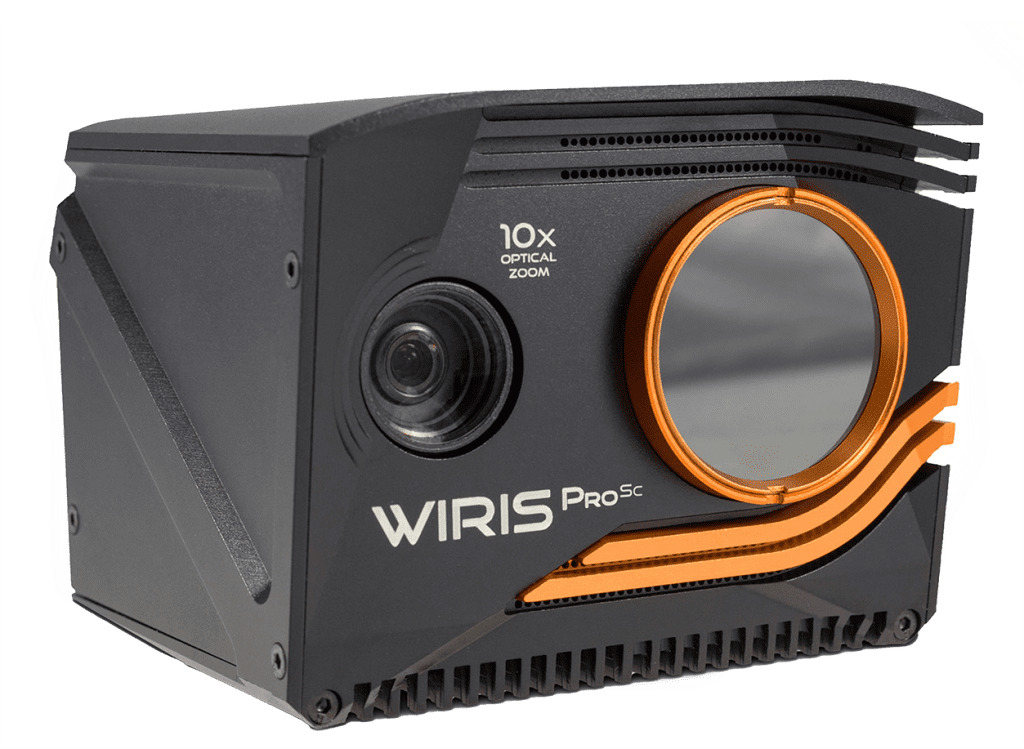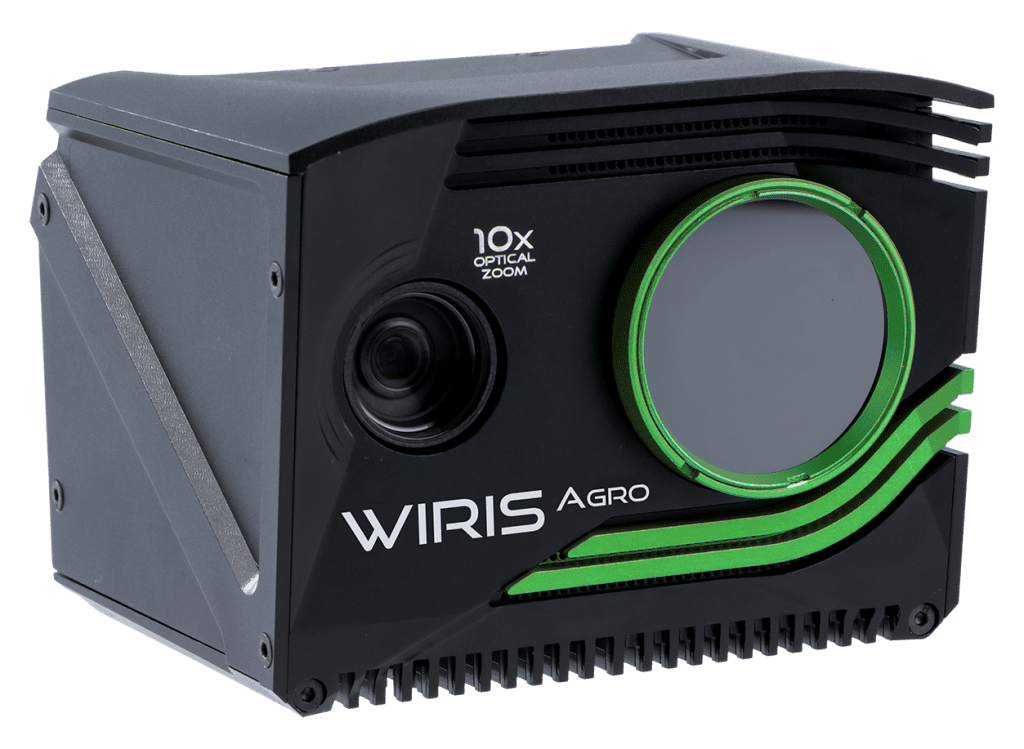Thermodiagnosis of
Photovoltaic Power Plants
Intoduction of thermodiagnosis of power plants
Environmental issues stand at the fore of modern business and politics. Even the mere risk of exhausting non-renewable energy sources has been enough to spur intense research into alternative energy production technologies. Solar energy, an inexhaustible resource, has seen the most use so far, in large part due to government incentives for the construction and support of solar power plants. Yet operating a solar plant is no simple matter. In addition to precise, high-quality assembly, solar plants require regular maintenance, and each panel must be continuously inspected. And thats, where thermodiagnosis of photovoltaic power plants takes its place.
A fast, cheap, and reliable method by which operators can inspect an expansive solar array consists in the thermodiagnostic measurements executed by the drone-mounted Workswell WIRIS thermal imaging system.
Today, they are a standard component of a wide variety of buildings. Flat roofs conserve material, are less labor intensive, and facilitate variable roofing layouts, as well as the potential use of roof areas. However, flat roofs also have disadvantages. The design of the roof layer composition is a complex matter, as is the structure’s thermal technical evaluation, and rigorous principles must be adhered to during implementation. Thermal imaging systems that can be mounted on drones offer the perfect tool to evaluate the technical condition of flat roofs.
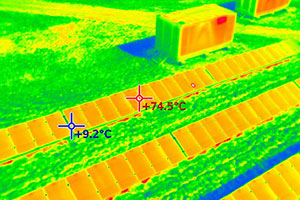
Why Power Plants Need Fixing?
Process defects are defects caused by poor construction and incorrect panel use. For the user, this may include mechanical damage from careless use (scratched, cracked or broken cells), or the insufficient maintenance of surface areas, which can lead to dirt settling over the photovoltaic surface. Dirt can compromise the integrity of individual layers of the panel caused through dispersion into the silicon material during the manufacturing process.
Most of the aforementioned defects result in the occurrence of hot places, known as hot spots. These occur when there is an increased recombination of electrons. Energy released during this process is radiated into space as heat. This excessive heating can lead to a thermal differential of more than 50°C when compared to normal cells.
Prevention is everything
This often leads to irreversible damage to the defective cell, as well as to the whole panel. Yet inspection of individual photo voltaic cells is usually a difficult task.
Either the panels are located high up on the roofs of buildings, or the area of the solar array is large, and a visual inspection is both time-consuming and financially demanding. However, the omission of regular inspections once a year (detailed inspection a minimum of 1x per 4 years) can have fatal consequences in the form of fire.
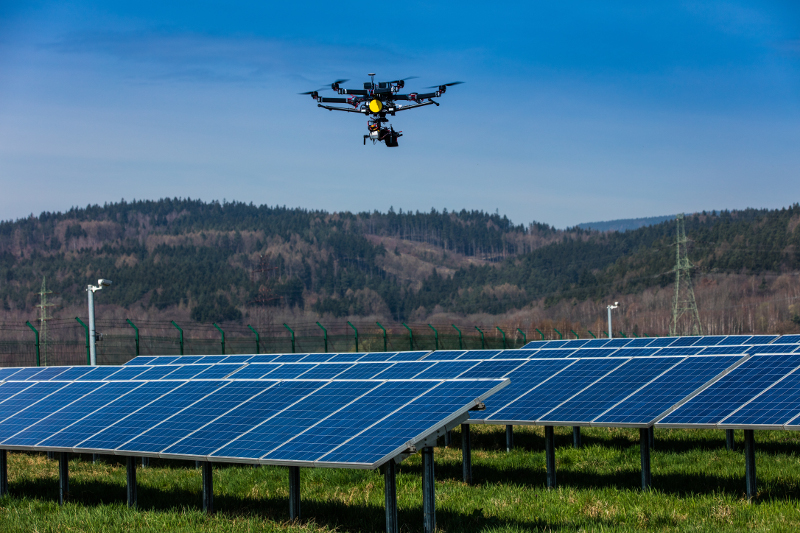
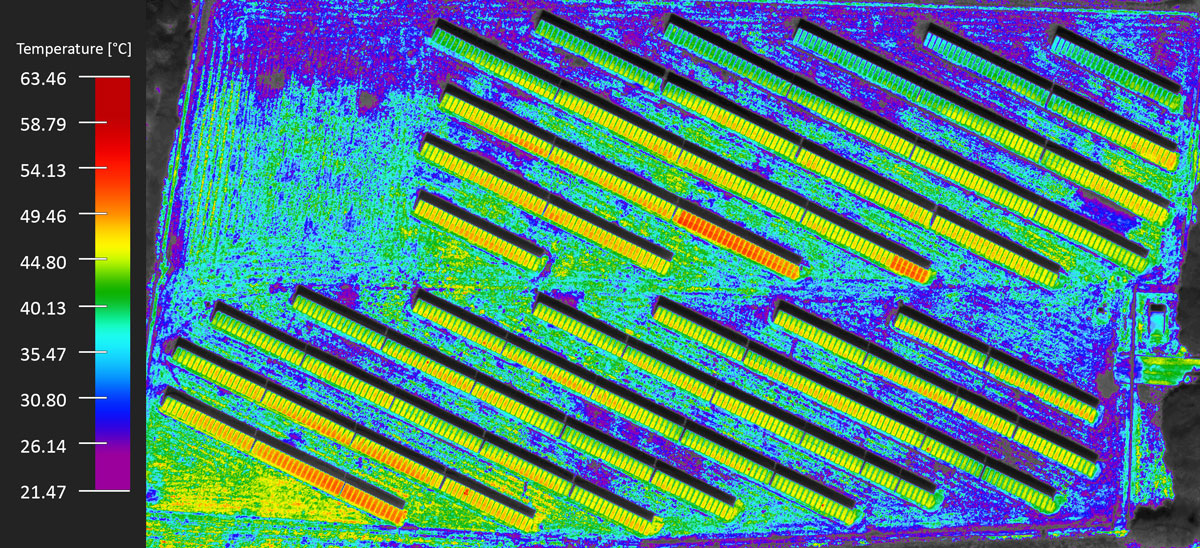
High resolution ortothermogram composed from over 600 separate thermograms in Pix4D (see Pix4D & bundle), visualizes a photovoltaic power plant with an area of 1.5 hectares. The picture was taken during a single flight with a total time 22 minutes.
Termodiagnosis of photovoltaic power plants deliver accurate diagnostics
Thermal camera systems offer an essential diagnostic tool for the hot spot problem. Since hot spots emit heat, they show up on thermal images (thermograms) as a vibrant color contrast with the rest of the panel. Yet in most cases, it is not possible – or safe – to approach panels with a thermal camera. Panels are often located on sloped roofs, and passing between panels can be impossible due to the presence various obstacles, such as plants. For these reasons, we designed the Workswell WIRIS thermal camera to be mounted on a UAV, or drone. Once airborne, the thermal camera delivers remarkable versatility.
To be successful, drone-based thermodiagnostic measurement requires the experience of both an inspector, and a pilot. The drone pilot maneuvers the UAV into position while the thermodiagnostician, who controls the camera system, identifies hot spots and stores images for later analysis.
The recommended inspection angle of a thermal anomaly ranges from 70° to nearly 90°. This can only rarely be achieved by a handheld system. However, a drone with a thermal camera fixed on the controllable gimbal easily fulfills this condition. The only limiting factor during the measurement process are hydro-meteorological conditions, which can significantly influence the measurement precision. An ambient temperature of 25°C, with a sunshine intensity of 1,000 W/m2, is ideal for measurement. In this case, the output of the panels is sufficiently high to reflect all types of defects.
The Workswell WIRIS
How does it help?
The Workswell WIRIS system enables remote regime switching, and it facilitates the definition of alarm statuses when selecting contrast colors in the thermogram to highlight places with a temperature exceeding the expected limit.
The hot points “light up” on the thermogram, and users can identify and focus on these signals at any stage of a detailed inspection.
The visible identification of warmer places is supported by the option to set a manual scope for the temperature scale. In the WIRIS, individual colors in the color pallet show the same temperature at all times, unlike simpler systems that automatically change the color scale with each change in temperature.
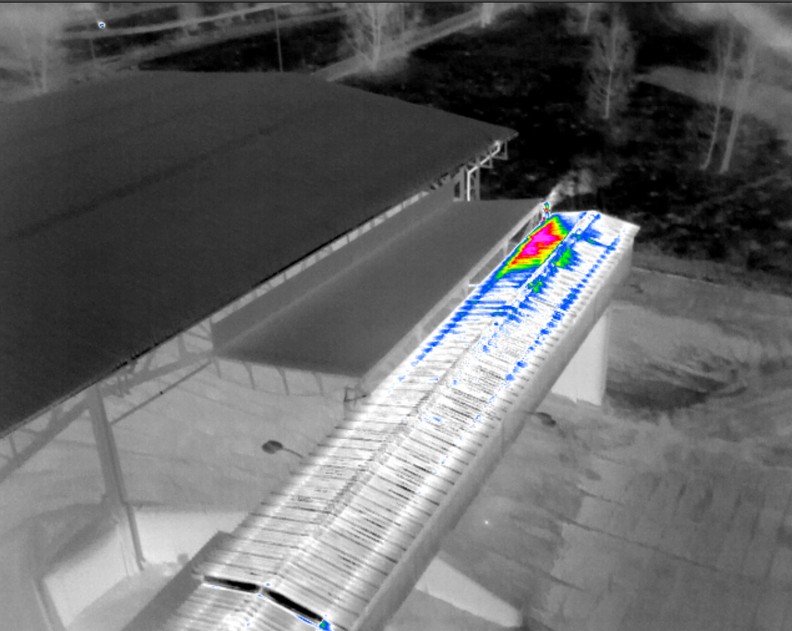
Why you need storage?
The WIRIS system offers another important feature to enhance inspections: GPS coordinates, stored to each saved image. This is especially important for large photovoltaic power plants, in which solar panels are distributed over a vast expanse of land. GPS coordinates facilitate the rapid determination of locations to which technicians must be sent for follow-up analyses and repairs.
The Workswell CorePlayer software also enables the creation of measurement reports that clearly present detected defects.
That is not all – the WIRIS PRO allows users to set the temperature range manually. Without this capability, the meaning of individual colors in the thermogram changes permanently with each adjustment, and users can never be sure whether a deep red indicates a significant temperature increase, or just a minor deviation. Our tests indicated that this function can decrease the length of inspections by as many as 10 times!

